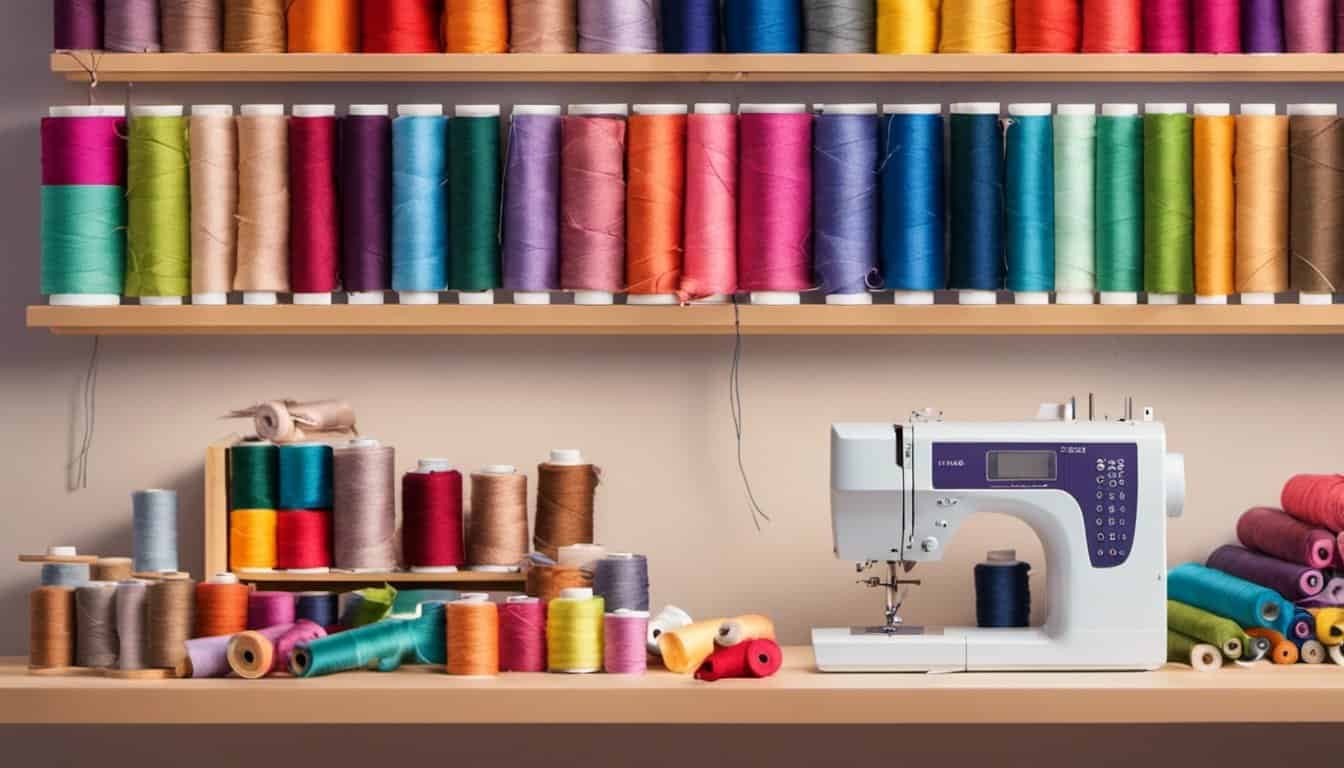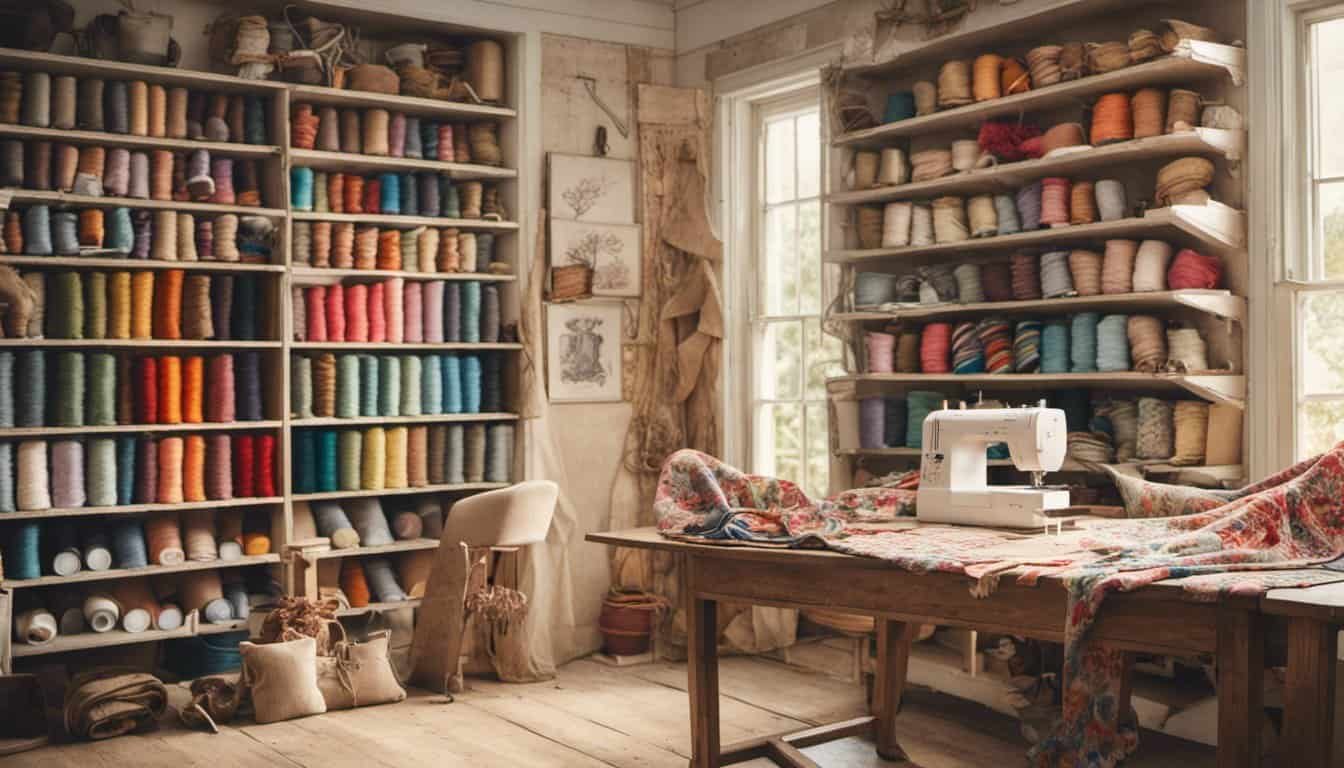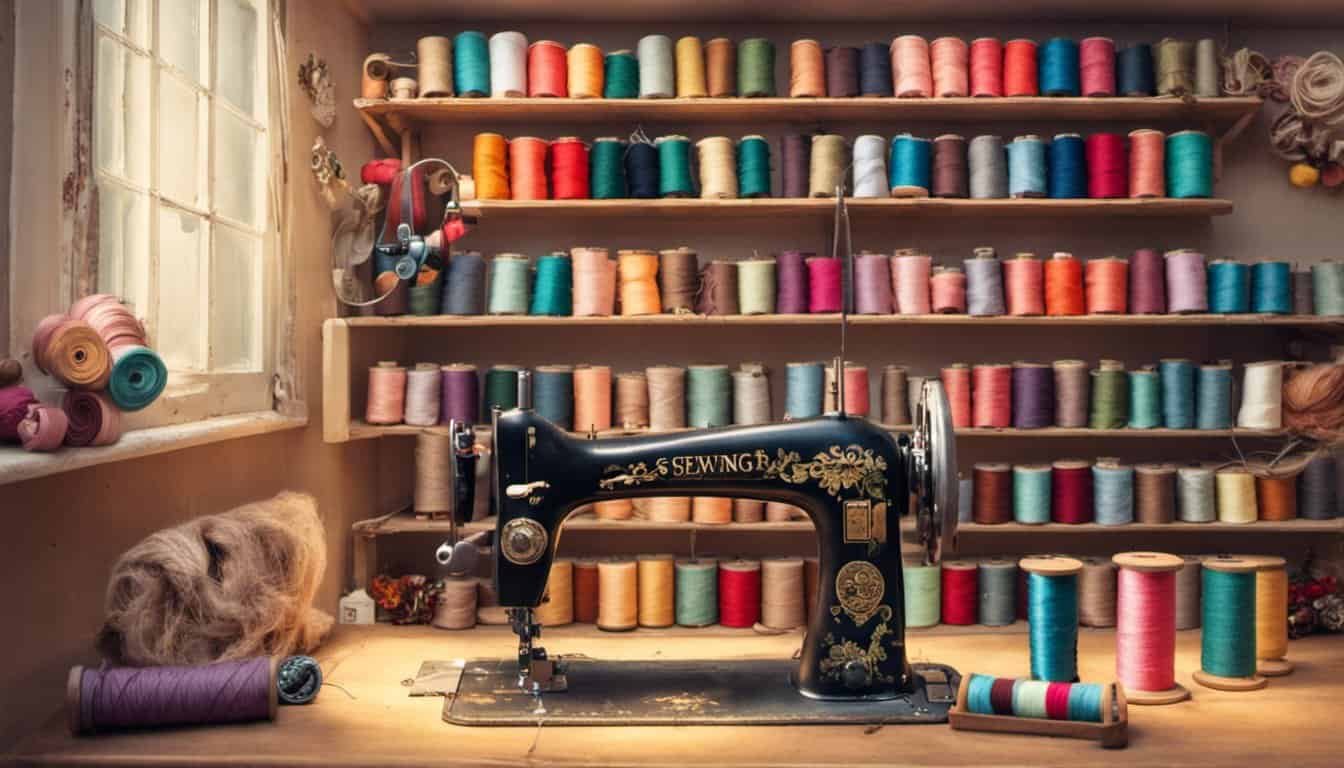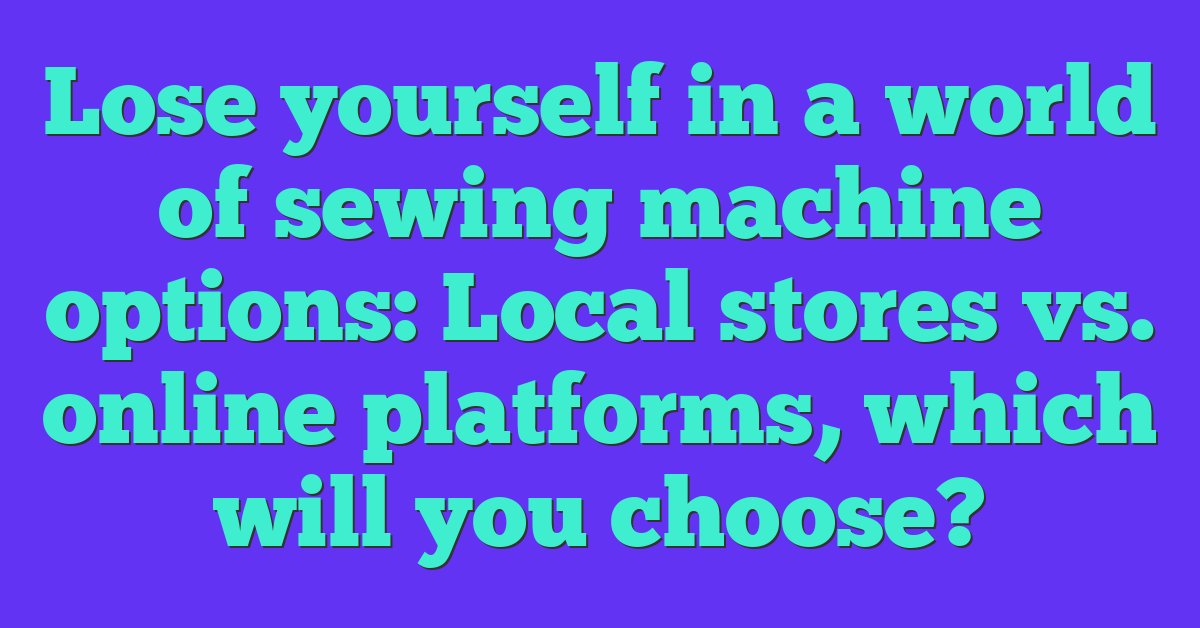Are you tired of spending hours hunched over a sewing machine, painstakingly stitching every seam by hand? Well, you’re not alone. Many people are wondering if sewing can be automated, and if so, how it could revolutionize the industry. In this article, we’ll explore the possibilities of automating sewing and the potential benefits it could bring to both professional sewers and hobbyists like you.
Imagine a world where you could simply input your design into a computer, and a machine would do all the sewing for you. Sounds like a dream, right? Well, it might not be too far-fetched. With advancements in technology, automated sewing machines are becoming more and more sophisticated. We’ll delve into the current state of automated sewing technology and discuss whether it’s truly possible to replace human skill and creativity with machines.
But what would automation mean for the art of sewing? Would it take away the joy and satisfaction that comes from creating something with your own hands? Or would it open up new possibilities and make sewing more accessible to everyone? We’ll explore these questions and more as we dive into the world of automated sewing. So, grab your thread and needle, and let’s find out if sewing can truly be automated.
The History of Sewing
Sewing has been around for thousands of years, dating back to the Paleolithic era. In those days, our ancestors used animal sinew and bones as needles and threaded them with plant fibers to sew together pieces of animal hides for clothing and shelter. As time went on, the craft of sewing evolved, and humans began using sharpened sticks or bones to create more intricate designs on their garments.
Ancient civilizations such as the Egyptians, Greeks, and Romans further advanced the art of sewing, using needles made of bone, bronze, and gold to sew together fabrics like linen and wool. Embroidery also emerged during this time, with intricate patterns and embellishments adorning clothing and home decor.
During the Middle Ages, sewing became an important trade, with skilled tailors creating bespoke garments for the elite. Techniques such as quilting and smocking were developed, adding texture and depth to clothing. Sewing guilds were formed, ensuring quality standards and sharing knowledge within the community.
The Industrial Revolution marked a significant turning point in sewing. With the invention of the sewing machine in the 19th century, the production of clothing became faster and more efficient. Mass production became possible, making garments more affordable for the general population. As automation and technology continued to advance, sewing machines became more sophisticated and capable of performing complex stitches and embroidery designs.
In recent years, the rise of computerized sewing machines and automated embroidery machines has revolutionized the sewing industry. These machines can now create intricate designs with speed and precision, reducing the time and effort required by the sewers. Digital patterns and software have made it easier for hobbyists and professionals alike to create complex designs and personalize their sewing projects.
While automation has certainly made sewing more accessible and efficient, it has also sparked debates about the impact on traditional craftsmanship and creativity. Can a machine truly replicate the skill and artistry of a human sewer? Will the joy and satisfaction of creating something by hand be lost?
As technology advances further, only time will tell how sewing and automation will continue to evolve together. Whether you prefer the traditional approach or embrace the convenience of automated sewing, there’s no denying that the history of sewing has brought us to an exciting crossroad where creativity and technology intertwine.
The Impact of Automation on Industries
In today’s world, automation has become a driving force in many industries, including sewing. As an expert in all things sewing, embroidery, knitting, and crafts, you might be wondering how automation has affected the art of sewing. Let’s explore the impact of automation on the sewing industry and the benefits and challenges it brings.
Increased Efficiency
One of the main benefits of automated sewing machines is their ability to increase productivity and efficiency. With automation, tasks that used to take hours can now be completed in a matter of minutes. Complex designs and intricate patterns can be effortlessly reproduced with precision, saving both time and effort. This not only allows manufacturers to produce more in less time but also enables individual crafters to complete projects quicker than ever before.
Consistent Quality
Automation in sewing has also led to improved consistency in the quality of products. Machines can execute stitches with the utmost accuracy, ensuring that each garment or craft piece meets the same high standards. The risk of human error is significantly reduced, resulting in fewer defects and a more professional finish. Whether it’s perfectly aligned hems or flawlessly embroidered designs, automation has raised the bar for quality in the sewing industry.
Job Market Concerns
While automation has undoubtedly brought numerous benefits, it also raises concerns about the future of traditional craftsmanship. As machines take over repetitive tasks, the demand for skilled sewers and artisans may decrease. It’s important, however, to recognize that automation also opens up new opportunities. As technology advances, the need for individuals who can operate and maintain these machines will rise. Additionally, automation allows for more complex and creative designs, providing the chance for artisans to showcase their unique skills and craftmanship.

Embracing Creativity
Automation has sparked a new wave of creativity in the sewing industry. With computerized sewing machines, crafters have access to a wide range of pre-programmed designs and patterns, making it easier than ever to experiment with new ideas. Additionally, software advancements now enable crafters to create and customize their designs, taking their creativity to new heights. The marriage of technology and creativity in the sewing industry has opened up a whole new world of possibilities.
As you can see, automation has had a significant impact on the sewing industry. While it has increased efficiency and quality, it has also raised concerns about the future of traditional craftsmanship. Nevertheless, the marriage of technology and creativity has resulted in exciting new opportunities for both manufacturers and individual crafters. So,
How Automation Has Affected Sewing
Sewing, embroidery, knitting, and other crafts have always been seen as personal and unique expressions of creativity. However, with the rise of automation, many wonder if these skills can be replicated by machines. Let’s take a closer look at how automation has influenced the sewing industry.
Increased Efficiency: With the introduction of automated sewing machines, manufacturers have been able to produce garments and textiles at a much faster rate. This has led to increased efficiency in the production process, allowing businesses to meet the growing demand for their products. Automated machines can stitch fabrics with precision and consistency, saving valuable time and reducing human error.
Improved Quality: Automation has also improved the quality of sewn products. With advanced technology, machines are programmed to execute complex stitching patterns with incredible accuracy. This level of precision ensures that each seam is perfectly aligned, resulting in a finished product that is well-constructed and durable. Automated systems also have the ability to detect flaws in the fabric, preventing defects from going unnoticed.
« Unveiling the Top Sewing Thread Secrets, You Won’t Believe What It’s Called
Shocking Truth Revealed: What Happens When You Swallow a Sewing Needle – Immediate Action Required »
Creativity Unleashed: Rather than stifling creativity, automation has actually sparked new possibilities in the sewing industry. Crafters and designers now have access to a wide range of automated tools and machines that can execute intricate designs and patterns. This has allowed them to explore new techniques and push the boundaries of what is possible in their craft.
New Opportunities: Automation has opened up opportunities for both manufacturers and individual crafters. Large-scale operations can streamline their production process, allowing them to create more products and reach a larger market. On the other hand, individual crafters can leverage automation to turn their hobby into a business. By incorporating automated machines into their workflow, they can produce high-quality items more efficiently, allowing them to scale their operations and increase their income.
The Future of Traditional Craftsmanship: While automation has undoubtedly brought many benefits to the sewing industry, it’s important to consider the future of traditional craftsmanship. As machines continue to evolve and become more advanced, there is a concern that handmade crafts may be overshadowed. However, it’s worth noting that there will always be a market for unique, handcrafted items, as they carry a personal touch and connection that cannot be replicated by machines.
In conclusion (no conclusion paragraph), automation has had a significant impact on the sewing industry. It has increased efficiency, improved product quality, and opened up new opportunities for manufacturers and crafters alike. While there are concerns about the future of traditional craftsmanship, it
Advantages of Automated Sewing
Automation in the sewing industry has revolutionized the way we create and produce textiles. From sewing garments to intricate embroidery, automation has brought numerous advantages that have enhanced the efficiency and quality of sewn products. Here are some of the key benefits of automated sewing:

1. Increased Efficiency:
With automated sewing machines, you can drastically reduce production time. These machines are designed to stitch at a much faster rate than human hands, allowing you to meet the growing demand for garments and textiles. By streamlining the production process, you can maximize output without compromising on quality.
2. Improved Precision and Consistency:
One of the remarkable advantages of automation is the ability to execute complex stitching patterns with precision and consistency. Automated machines ensure that each stitch is made with the same level of accuracy, resulting in flawless finished products. The consistent quality offered by these machines not only saves time but also helps in building a reputation for excellence.
3. Enhanced Creativity:
Contrary to popular belief, automation in sewing has not stifled creativity but has, in fact, sparked new possibilities. With automated machines, you can explore intricate embroidery designs and patterns that were once time-consuming and challenging to execute by hand. These machines allow you to experiment with different techniques and embellishments, unleashing your creative potential.
4. Scalability and Versatility:
Automation enables both large-scale manufacturers and individual crafters to scale their operations effectively. Whether you’re running a clothing production company or a small embroidery business, automated sewing machines can accommodate higher production volumes and handle a variety of textiles and materials. This scalability and versatility give businesses the flexibility to meet different customer demands and expand their offerings.
Automation has undoubtedly brought significant advantages to the sewing industry. Increased efficiency, improved precision and consistency, enhanced creativity, and scalability are just a few of the benefits that automated sewing machines offer. As the industry continues to evolve, embracing automation allows us to optimize our processes, achieve higher productivity, and explore new horizons in sewing, embroidery, and other crafts.

Challenges of Automating Sewing
While automation has undoubtedly brought numerous benefits to the sewing industry, there are also some challenges to consider. Let’s take a closer look at the obstacles that arise when attempting to automate the art of sewing.
Complexity of Sewing Techniques
Sewing is a skill that involves intricate techniques and delicate craftsmanship. Automating these techniques can be quite challenging. Sewing involves tasks such as intricate stitching, attaching buttons and zippers, and creating complex patterns. Stitching irregular fabrics and working with delicate materials require a level of finesse that is difficult to replicate in machines.
Adaptability to New Designs
One of the biggest challenges in automating the sewing process is the ability to adapt to new designs. Sewing often requires creativity and innovation, especially when it comes to creating unique embroidery designs or incorporating custom details. Machines need to be updated and programmed to handle these new designs, which can be time-consuming and costly.
Maintenance and Upkeep
Automation in sewing also brings the need for regular maintenance and upkeep of the machines. Like any other equipment, sewing machines require regular servicing, calibration, and troubleshooting. This can lead to downtime and added costs. In addition, operators need to be trained to handle and maintain these machines properly.
Initial Investment
Investing in automated sewing technology can be a significant expense, especially for small-scale manufacturers or individual crafters. The cost of purchasing and setting up automation equipment, along with the associated software and infrastructure, can be a barrier for many. However, it’s important to note that these costs can often be offset in the long term by increased efficiency, productivity, and quality.

As with any new technology, there are challenges to overcome when it comes to automating sewing processes. However, advancements in technology continue to address these challenges, making automation more accessible and efficient. Despite the obstacles, the benefits of automation in the sewing industry are undeniable, with increased efficiency, improved quality, and endless possibilities for creativity.
Future Possibilities for Automated Sewing
As technology continues to advance, the possibilities for automated sewing are expanding in exciting ways. As an expert in all things sewing, embroidery, knitting, and crafts in general, you’re probably wondering what the future holds for automated sewing. Well, let me tell you, the future is looking bright!
1. Artistic Freedom
With automation, you’ll have the freedom to explore more intricate designs and patterns. Advanced machines can now handle complex embroidery stitches with ease, allowing you to unleash your creativity like never before. From delicate floral motifs to intricate lace patterns, the possibilities are endless. Automated sewing machines can bring your artistic vision to life with precision and accuracy.
2. Customization
Imagine being able to personalize every stitch, every seam, and every detail of your creation. With automated sewing, customization becomes a breeze. You can easily program your machine to stitch unique designs and create one-of-a-kind pieces. Whether you’re making personalized gifts or designing couture garments, automation opens up a world of customization.
3. Smart Technology
We live in a world of smart devices, and sewing machines are no exception. In the future, automated sewing machines will be equipped with advanced sensors and algorithms. These machines will be able to adapt to different fabrics and sewing techniques, ensuring flawless results every time. Smart technology will revolutionize the sewing process, making it easier, more efficient, and more accessible for everyone.

4. Integrated Workflow
Automation isn’t just about sewing machines. In the future, you can expect to see a seamless integration of different technologies, such as computer-aided design (CAD) and computerized pattern cutting. This integration will allow for faster and more streamlined workflows, from design to production. Automated systems will work hand in hand, eliminating the need for manual intervention at every step.
5. Sustainability
Sustainability is a growing concern in the fashion and textile industry. Automated sewing can contribute to a more sustainable future. By minimizing fabric waste and optimizing production processes, automation helps reduce the environmental impact of sewing. With the advancements in technology, automated machines are becoming more energy-efficient, further improving their sustainability credentials.
Conclusion
By exploring the impact of automation on the sewing industry, we have discovered the numerous advantages it brings. Automation has revolutionized the sewing process, increasing efficiency, precision, and creativity. It has allowed for faster production times and higher output while maintaining the highest quality standards. With automation, stitching patterns are flawlessly executed, resulting in impeccable finished products.
Contrary to popular belief, automation has not stifled creativity; instead, it has enabled the exploration of intricate embroidery designs and patterns. It has provided scalability and versatility for manufacturers of all sizes, from large-scale operations to individual crafters. The future of automated sewing looks promising as technology continues to advance.
In the coming years, we can expect to see even more possibilities for automated sewing. Artistic freedom will be enhanced, allowing for the creation of intricate designs. Customization options will expand, catering to individual preferences. Smart technology will be integrated, making the sewing process more streamlined and efficient. Additionally, automation will contribute to sustainability efforts, reducing waste and energy consumption.

While there are challenges to overcome, such as the complexity of sewing techniques and the initial investment required, advancements in technology are making automation more accessible and efficient. As a result, the sewing industry is undergoing a significant transformation, embracing the benefits that automation brings.

















